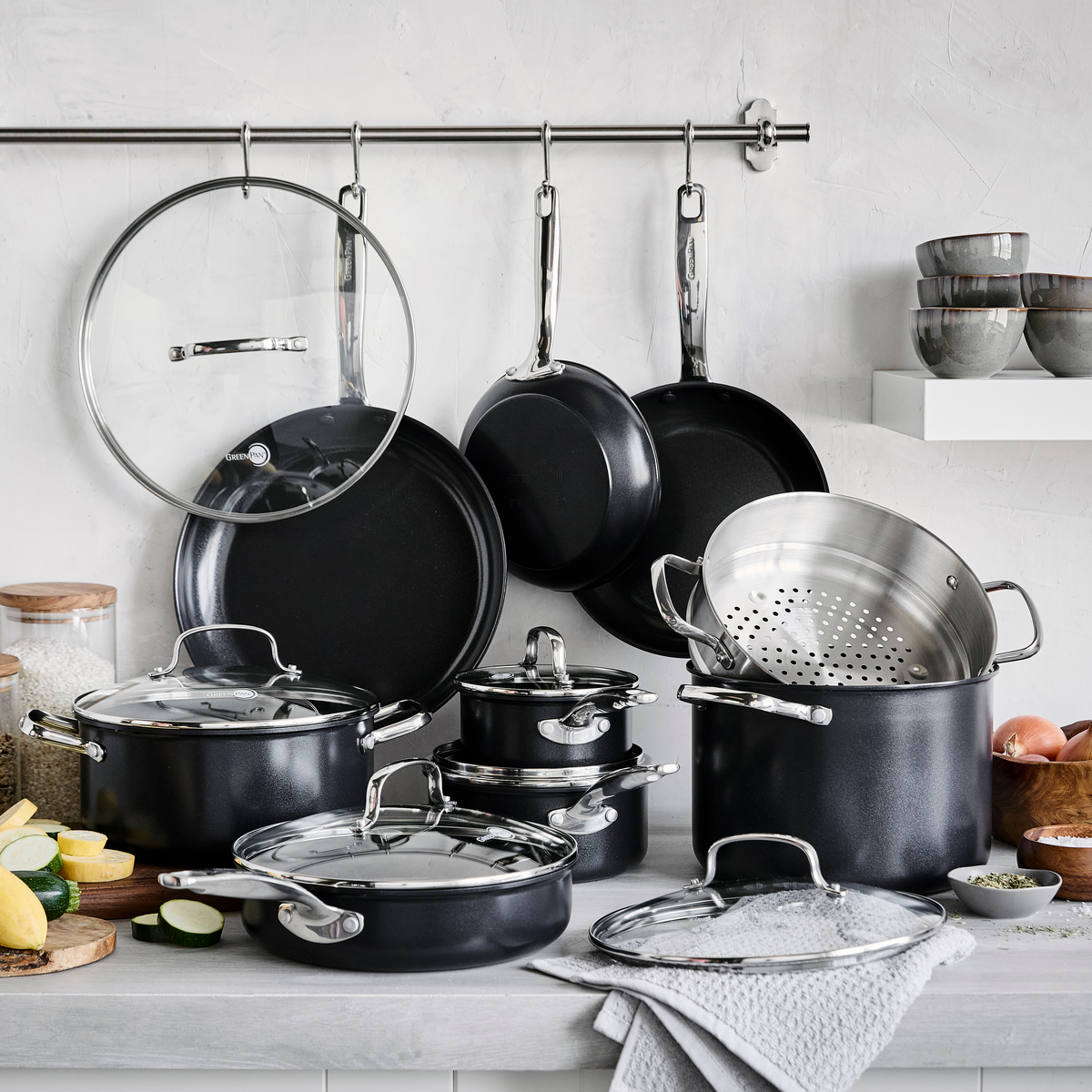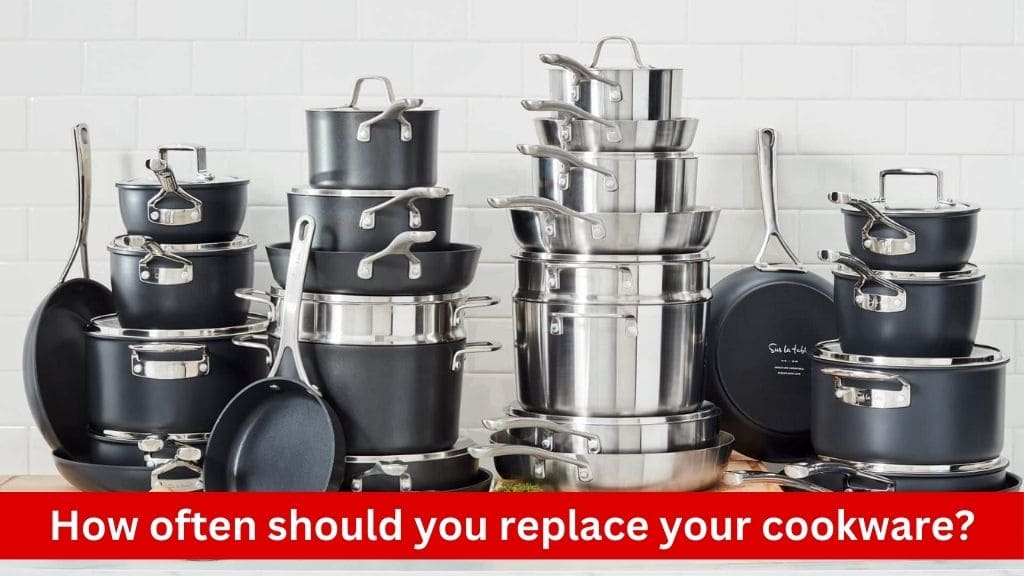Cookware is an essential part of any kitchen, facilitating the preparation of delicious meals. However, like any other tool, cookware has a lifespan and requires periodic replacement to maintain safety and efficiency in the kitchen. In this comprehensive guide, we’ll delve into the various types of cookware and provide insights into how often they should be replaced to ensure optimal performance.
Understanding Cookware Lifespan
:max_bytes(150000):strip_icc()/faw-primary-stainless-cookware-sets-rkilgore-01-4238feae7c9b4f62b13a0a86974241c5.jpeg)
Material Quality
The quality of materials used in manufacturing cookware plays a significant role in determining its lifespan. High-quality materials, such as stainless steel, cast iron, and durable non-stick coatings, are more resistant to wear and tear, corrosion, and heat damage. On the other hand, lower-quality materials may degrade more quickly, leading to premature replacement.
Examples:
- Stainless Steel: Known for its durability and resistance to corrosion, stainless steel cookware is designed to withstand high temperatures and frequent use without deteriorating quickly.
- Cast Iron: Renowned for its longevity, cast iron cookware can last for generations when properly cared for. Its robust construction and natural non-stick surface contribute to its extended lifespan.
- Non-Stick Coatings: The quality of non-stick coatings, such as PTFE (Teflon) or ceramic, varies depending on the manufacturer. High-quality coatings adhere well to the cookware surface and resist peeling, scratching, and wear, while lower-quality coatings may degrade more quickly.
Frequency of Use
The frequency with which cookware is used directly impacts its lifespan. Cookware that sees regular use, such as daily cooking or frequent meal preparation, is subjected to more wear and tear than items used infrequently. Over time, the constant exposure to heat, food, cleaning agents, and utensils can contribute to the degradation of materials and coatings.
Examples:
- Non-Stick Cookware: Daily use of non-stick pans can gradually wear down the non-stick coating, leading to decreased performance and potential health risks. Scratches from metal utensils or abrasive cleaning tools can accelerate this process.
- Cast Iron Cookware: Regular seasoning and cooking help maintain the integrity of cast iron pans, but frequent use can also lead to wear and tear. Proper care, including regular seasoning and cleaning, is essential for preserving the longevity of cast iron cookware.
Maintenance Practices
Proper maintenance is crucial for extending the lifespan of cookware and ensuring optimal performance. Regular cleaning, seasoning (for cast iron), storage, and usage practices can help prevent damage and deterioration over time. Neglecting maintenance tasks or using improper cleaning methods can accelerate wear and lead to premature replacement.
Examples:
- Hand Washing: Avoiding harsh detergents and abrasive cleaning tools can help preserve the integrity of non-stick coatings, ceramics, and other materials. Hand washing cookware with mild dish soap and warm water is generally recommended over dishwasher cleaning.
- Seasoning Cast Iron: Regularly seasoning cast iron pans creates a protective layer that enhances their non-stick properties and prevents rust and corrosion. Failure to season cast iron cookware can lead to rusting and deterioration of the cooking surface.
- Proper Storage: Storing cookware in a dry, well-ventilated area helps prevent moisture buildup, corrosion, and damage. Stack pots and pans carefully to avoid scratching or denting surfaces, and use protective liners or dividers to prevent metal-on-metal contact.
Heat Exposure
Exposure to high temperatures, especially rapid changes in temperature, can cause damage to cookware materials and coatings. Thermal shock, caused by sudden temperature fluctuations, can lead to warping, cracking, or other forms of structural damage. Proper usage practices, including preheating pans gradually and avoiding extreme temperature changes, can help mitigate heat-related damage.
Examples:
- Warping: Rapid heating or cooling of cookware can cause uneven expansion and contraction of materials, leading to warping or deformation. Stainless steel and aluminum cookware are particularly susceptible to warping if subjected to extreme heat or sudden temperature changes.
- Non-Stick Coating Damage: Excessive heat exposure can cause non-stick coatings to break down, resulting in peeling, bubbling, or charring. Overheating non-stick pans can release harmful fumes and degrade the integrity of the coating, necessitating replacement.
Types of Cookware and Replacement Recommendations

Non-Stick Cookware
Description: Non-stick cookware features a special coating, typically made of polytetrafluoroethylene (PTFE) or ceramic, that prevents food from sticking to the surface during cooking. This coating makes it easier to cook delicate foods like eggs and fish without the need for excess oil or butter.
Lifespan: Approximately 3-5 years
Replacement Indicators:
- Peeling or Flaking: The non-stick coating may start to peel or flake off, exposing the underlying metal surface. This can compromise the pan’s non-stick properties and lead to food sticking or burning.
- Scratches or Damage: Scratches from metal utensils or abrasive cleaning tools can damage the non-stick coating, reducing its effectiveness and potentially releasing harmful particles into food.
- Loss of Non-Stick Properties: Over time, the non-stick coating may wear down, causing food to stick to the pan more easily. If you find yourself struggling to cook without food sticking, it may be time to replace your non-stick cookware.
Ceramic Cookware
Description: Ceramic cookware is made from clay that has been kiln-fired to create a durable, non-reactive surface. It is prized for its non-stick properties, even heat distribution, and resistance to high temperatures.
Lifespan: 1-3 years (with proper care)
Replacement Indicators:
- Chipping or Flaking: Ceramic coatings can chip or flake off over time, especially if subjected to rough handling or high heat. Chipped areas can expose the underlying metal, compromising the pan’s performance and safety.
- Loss of Non-Stick Properties: As the ceramic coating wears down, food may start to stick to the pan more easily. If you notice a decline in non-stick performance despite proper care, it may be time to consider replacing your ceramic cookware.
- Visible Signs of Wear and Tear: Scratches, stains, or discoloration on the surface of ceramic cookware may indicate deterioration and reduced effectiveness. While cosmetic damage alone may not warrant replacement, it’s essential to monitor for signs of structural degradation.
Stainless Steel Cookware
Description: Stainless steel cookware is made from a durable alloy of steel and chromium, known for its strength, resistance to corrosion, and versatility. It is prized for its ability to withstand high temperatures, making it ideal for searing, sautéing, and browning foods.
Lifespan: Decades
Replacement Indicators:
- Severe Warping or Deformation: Stainless steel cookware can warp or deform if subjected to extreme heat or rapid temperature changes. Severe warping can affect the pan’s performance and make it unstable on the stovetop.
- Corrosion or Rusting: While stainless steel is resistant to corrosion, prolonged exposure to moisture or acidic foods can cause rusting or discoloration. Rust spots on the cooking surface or exterior of the pan may indicate deterioration and compromise food safety.
- Damage to Handles or Components: Handles are often the weakest points of stainless steel cookware and can break or become loose over time. Additionally, damage to lids, knobs, or other components can affect usability and safety.
Cast Iron Cookware
Description: Cast iron cookware is made from molten iron that is poured into molds and allowed to cool and solidify. It is renowned for its durability, heat retention, and ability to develop a natural non-stick surface through seasoning.
Lifespan: Generations
Replacement Indicators:
- Severe Rusting or Corrosion: Cast iron cookware can rust if not properly seasoned and maintained. Severe rusting or corrosion may compromise the integrity of the pan and render it unsafe for cooking.
- Cracks or Fractures: Extreme temperature changes or physical trauma can cause cast iron cookware to crack or fracture. Cracks in the metal can affect heat distribution and make the pan unsafe to use.
- Irreparable Damage to Cooking Surface: Deep pitting, warping, or other forms of damage to the cooking surface may render cast iron cookware unsuitable for cooking. While minor cosmetic imperfections are normal, significant damage can affect performance and safety.
Maintenance Tips for Extending Cookware Lifespan

Hand Washing
Description: Hand washing cookware with mild dish soap and warm water is the preferred method for cleaning. Avoid using harsh detergents or abrasive cleaning tools, as they can damage non-stick coatings, ceramics, and other materials.
Benefits:
- Preserves the integrity of non-stick coatings and surface finishes.
- Minimizes the risk of scratches, dents, or other forms of damage.
- Removes food residues and grease effectively without compromising the cookware’s performance.
Tips:
- Use a soft sponge or cloth to gently scrub the surface of the cookware.
- Avoid soaking non-stick cookware for extended periods, as this can degrade the non-stick coating.
- Dry the cookware thoroughly after washing to prevent water spots or mineral deposits.
Seasoning (for Cast Iron)
Description: Cast iron cookware requires regular seasoning to maintain its non-stick properties and prevent rusting. Seasoning involves applying a thin layer of oil to the cooking surface and heating it to create a protective patina.
Benefits:
- Creates a natural non-stick surface that improves cooking performance.
- Protects the metal from rust and corrosion.
- Enhances the flavor and appearance of cooked foods.
Tips:
- Apply a thin layer of oil (such as vegetable oil or flaxseed oil) to the entire surface of the cookware.
- Heat the cookware in the oven or on the stovetop until the oil begins to smoke.
- Repeat the seasoning process periodically to maintain the protective patina.
Proper Storage
Description: Storing cookware properly helps prevent damage and prolongs its lifespan. Store pots and pans in a dry, well-ventilated area away from sources of moisture and heat.
Benefits:
- Prevents moisture buildup, which can lead to rusting or corrosion.
- Minimizes the risk of scratches, dents, or other physical damage.
- Maximizes space and accessibility in your kitchen.
Tips:
- Stack pots and pans carefully to avoid scratching or denting the surfaces.
- Use protective liners or dividers to prevent metal-on-metal contact.
- Hang pots and pans on a rack or pegboard to free up cabinet space and facilitate easy access.
Avoid Metal Utensils

Description: Using wooden or silicone utensils helps prevent scratches and damage to non-stick coatings, ceramics, and other surface finishes. Metal utensils can compromise the integrity of these coatings and lead to premature wear.
Benefits:
- Preserves the non-stick properties of cookware.
- Prevents scratches, chips, or peeling of surface coatings.
- Extends the lifespan of pots and pans.
Tips:
- Use wooden spoons, silicone spatulas, or nylon utensils when cooking or serving.
- Avoid using metal utensils, forks, or knives that can scratch or gouge the surface of the cookware.
- Be gentle when stirring, flipping, or serving foods to minimize wear and tear.
Monitor Heat Exposure
Description: Excessive heat exposure can damage cookware materials and coatings, leading to warping, cracking, or other forms of deterioration. Proper heat management helps preserve the integrity and performance of pots and pans.
Benefits:
- Prevents warping, deformation, or structural damage to cookware.
- Preserves the non-stick properties of coatings and surface finishes.
- Ensures safe and consistent cooking results.
Tips:
- Preheat cookware gradually to prevent thermal shock and uneven heating.
- Avoid using high heat settings unless necessary, as excessive heat can degrade non-stick coatings and other materials.
- Allow cookware to cool gradually before cleaning or storing to prevent damage from temperature fluctuations.
Conclusion
Knowing when to replace cookware is essential for maintaining a safe and efficient kitchen. By understanding the lifespan of different types of cookware and following proper maintenance practices, you can maximize the longevity of your pots and pans while ensuring optimal performance. Whether it’s replacing worn-out non-stick pans or seasoning a cherished cast iron skillet, investing in quality cookware and caring for it diligently will enhance your culinary experiences for years to come.

